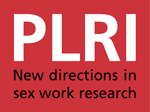Overs
6 new frameworks have been published in 2011. Stand by for even more ‘definitions’ of decriminalisation and legalisation. by Cheryl Overs The recent Lancet publication of the HPTN 052 study has shown unequivocally that initiation of anti-retroviral treatment (ART) by people with HIV substantially protects their HIV-uninfected sexual partners from acquiring HIV infection, with a 96 percent reduction in risk of HIV transmission.[1] The announcement in June is a welcome confirmation of what many already suspected – that ART is prevention. The word ‘game-changer’ was, not surprisingly, all over the internet within hours of the publication of the announcement of the

